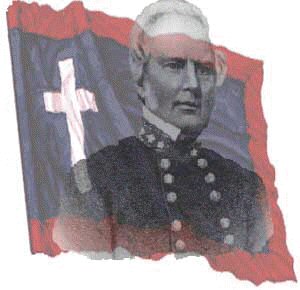

Served as Camp Commander for Sterling Price Camp #145 in 1948. He was born in St. Louis in 1889, in the area known as the Cabanne Place District, at 5595 Bartmer. One of his neighbors was ex-Confederate Joseph Boyce, who lived at 5812 Clemens.. Governor Hamilton Gamble’s home was at the corner of Hamilton and Plymouth. Frederick’s father, Henry V. Niemeyer, was born on February 24th, 1845, and served in the 9th Virginia Infantry C.S.A. He was a member of the Stonewall Camp UCV of Portsmouth, Virginia. The family moved to St. Louis in 1894, and Henry served as the drama critic for the St. Louis Post Dispatch for many years. He also served on the St. Louis Cotton Exchange. Their home in the Cabanne Place District was designed by Theodore Link, who also designed Union Station. Henry Niemeyer died March 7th, 1941, and is buried in Bellefontaine Cemetery. As a youth Frederick sang in the choir at St. Rose Catholic Church (Maple and Goodfellow), although he was an Episcopalian. A fellow choir member and good friend was Clark Clifford, who served as U.S. Secretary of Defense in 1969. Frederick attended the Episcopal Church of the Ascension at Cates and Goodfellow, and sang in that choir also, under the direction of Charles D. Geer. He was very active in the historic community, serving in various capacities of the Missouri Historical Society. In 1952 he served on the nomination committee for the election of trustees for the Society. In 1953 he was elected to the board of trustees, serving as Assistant Secretary. At the time Col. Isaac A. Long, another Sterling Price Camp #145 member was serving as Vice President of the Missouri Historical Society. Frederick served several terms as trustee from 1952 til 1959. Frederick Niemeyer died in 1987 and is buried in Bellefontaine Cemetery next to his father.
Sources: Missouri Historical Society Bulletins; VII p412, XXV p.110, and IX
Bellefontaine Cemetery Guide Book p.5
Confederate Veteran Magazine 1926 p.269